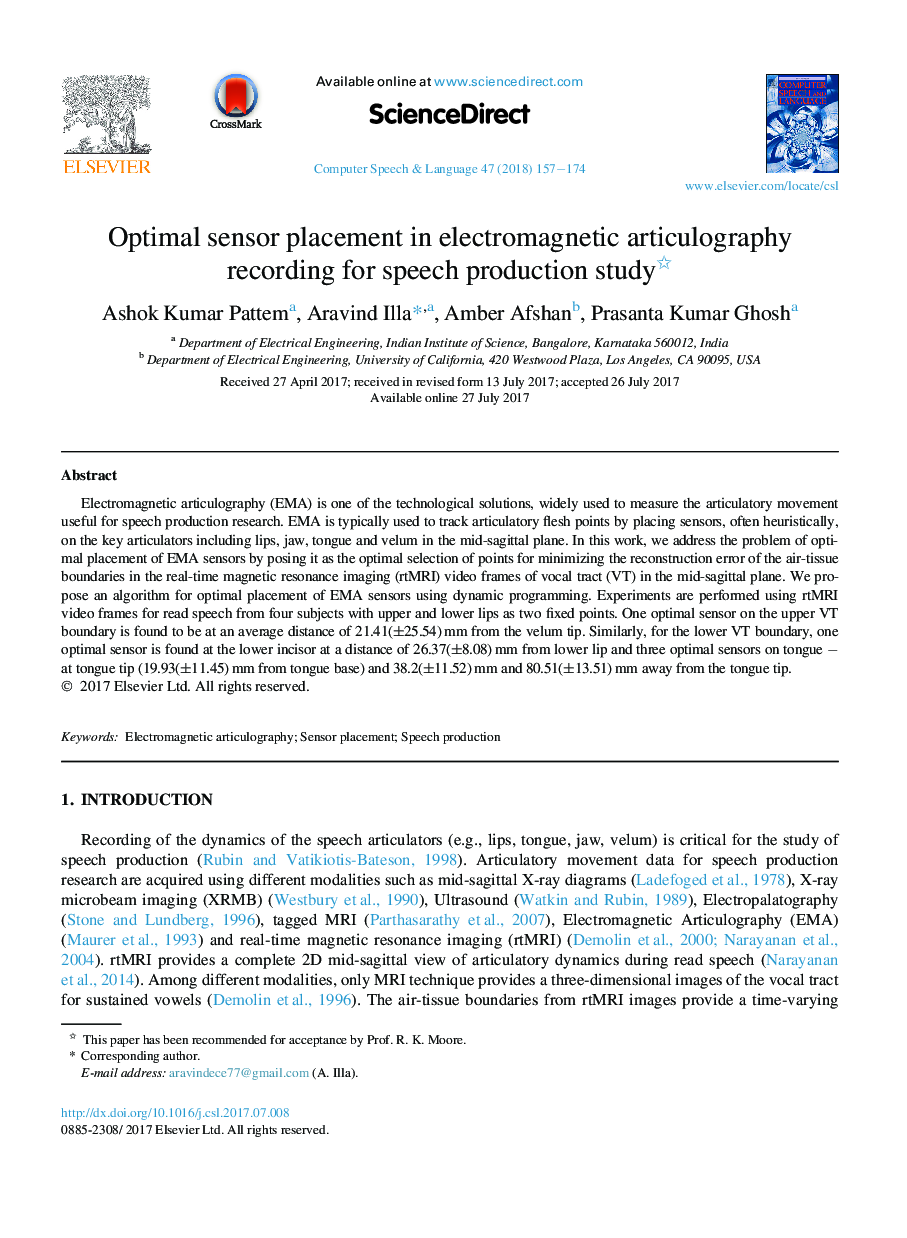| Article ID | Journal | Published Year | Pages | File Type |
|---|---|---|---|---|
| 4973644 | Computer Speech & Language | 2018 | 18 Pages |
Electromagnetic articulography (EMA) is one of the technological solutions, widely used to measure the articulatory movement useful for speech production research. EMA is typically used to track articulatory flesh points by placing sensors, often heuristically, on the key articulators including lips, jaw, tongue and velum in the mid-sagittal plane. In this work, we address the problem of optimal placement of EMA sensors by posing it as the optimal selection of points for minimizing the reconstruction error of the air-tissue boundaries in the real-time magnetic resonance imaging (rtMRI) video frames of vocal tract (VT) in the mid-sagittal plane. We propose an algorithm for optimal placement of EMA sensors using dynamic programming. Experiments are performed using rtMRI video frames for read speech from four subjects with upper and lower lips as two fixed points. One optimal sensor on the upper VT boundary is found to be at an average distance of 21.41(±25.54)â¯mm from the velum tip. Similarly, for the lower VT boundary, one optimal sensor is found at the lower incisor at a distance of 26.37(±8.08)â¯mm from lower lip and three optimal sensors on tongue - at tongue tip (19.93(±11.45)â¯mm from tongue base) and 38.2(±11.52)â¯mm and 80.51(±13.51)â¯mm away from the tongue tip.
